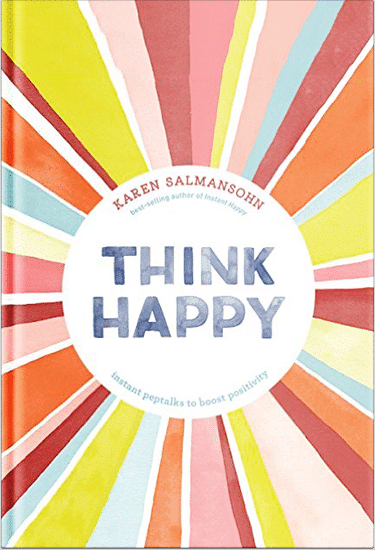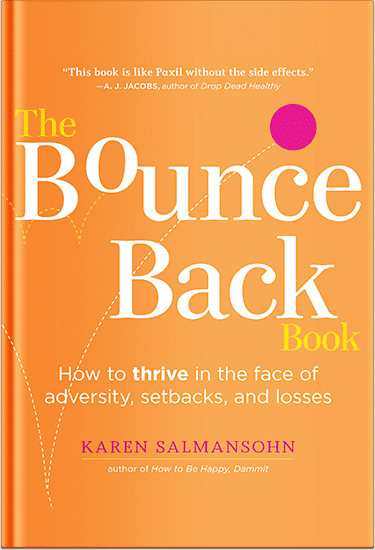 Thankfully, you can train your brain to go from pessimist to optimist with the help of your your Reticular Activating System (RAS). Read on…
Thankfully, you can train your brain to go from pessimist to optimist with the help of your your Reticular Activating System (RAS). Read on…
Ever catch yourself looking at the bright side of a messy situation? Or maybe you’re the one wondering why your toast always lands butter side down?
Yep, that’s the classic battle between optimism and pessimism that we all face.
I write a lot about what makes someone a pessimist versus optimist on my Notsalmon Instagram page and inside my bestselling personal development books.
But today I want to share something quirky and neuroscience based… about how you can go from pessimist to optimist with the help of your Reticular Activating System (RAS).
Sounds complicated – but it’s really very simple!
Understanding Our Brain’s Spotlight: The Reticular Activating System (RAS)
 Ever noticed that when someone introduces you to a new cool brand or new fashion trend, you suddenly spot it everywhere?
Ever noticed that when someone introduces you to a new cool brand or new fashion trend, you suddenly spot it everywhere?
That’s your Reticular Activating System (RAS) at play – working as your brain’s spotlight on your life.
Now your brain’s RAS spotlight doesn’t just light up for our shopping preferences or the latest trends we’ve learned about.
It’s also the reason some people always seem to have a positive outlook on life… even in the midst of challenging situations.
And it’s why other people seem to always focus on the negative aspects of life… even in seemingly good situations.
Now, how does this RAS thingy connect with being a sunny-eyed optimist versus cloudy-eyed pessimist? .
First let me explain a bit more about how the RAS works.
At its core, the RAS is a cluster of nerves situated at the base of our brainstem.
It functions as a “gatekeeper” for our consciousness, sifting through all the information we encounter in a day – then highlighting what it deems as most important.
For this reason, I tend to describe the RAS as your “brain’s spotlight.”
Basically, the RAS focuses on certain information – based on where you’ve decided to direct your attention.
- So if you focus on the good in a situation, you’ll find the good – and thereby feel good.
- And if you focus on the bad, you’ll find the bad – and thereby feel bad.
The Optimist vs. The Pessimist: A Matter of Focus
 Numerous scientific studies have reported how the RAS can make someone more pessimistic or more optimistic. Here’s a quick explanation of why this happens.
Numerous scientific studies have reported how the RAS can make someone more pessimistic or more optimistic. Here’s a quick explanation of why this happens.
1. Optimists
The optimist is a master at directing their RAS towards positive stimuli. They’re like “positive evidence collectors” – collecting proof of the good things going on around them.
Example: Let’s say an optimist faces a delay in their morning commute. Instead of grumbling about the inconvenience, thanks to their RAS they appreciate the extra time to listen to their favorite podcast.
2. Pessimists
The pessimist on the other hand, often unconsciously trains their RAS to highlight negatives – and so they become “negative evidence collectors.” Because of their RAS, they collect proof of all the bad things going on around them.
Example: In a similar morning commute delay, a pessimist might fixate on how their entire day is ruined, how they might be late for a meeting, or how transport systems are always unreliable.
But here’s the good news: You can train your RAS to become an intentional positive evidence collector – by purposefully filtering your thoughts and environment for reasons to feel happy!
And the more you look for the positive, the more easy it will be become to find the positive – thanks to how your RAS is biologically structured to work!
Note: Becoming a positive evidence collector is not about being blindly optimistic. It’s about taking control of your perception and choosing to focus a bit more on the positive aspects of your life.

Best of all… Studies have found that individuals who tend to focus on positive aspects of their lives are less likely to experience symptoms of depression and anxiety.
6 Tips to Harness Your RAS and Go From Pessimist to Optimist
Here are strategies to channel your RAS and go from pessimist to optimist so you can enjoy a brighter outlook.
1. Start small:
We often underestimate the power of little joys. Whether it’s the warmth of your morning coffee, a kind message from a friend, or simply a fresh breeze on your face, start by acknowledging these moments. By consciously focusing on even the smallest of positives, you’re training your RAS to pick out the good over the not-so-good. Over time, this becomes a habit, shifting your mindset towards optimism.
2. Challenge negative thoughts:
Not every thought that pops into your head is an absolute truth. When you catch yourself in a spiral of negative thoughts, pause and interrogate them. Ask: “Is this fact or just a perception?”, “Have I looked at all angles of this situation?”, or “What’s a positive spin I can put on this?” By consistently challenging negative beliefs, you’ll rewire your brain to be less accepting of them.
3. Practice self-compassion:
No one’s perfect, and everyone has those days where the glass seems half empty. When you’re feeling down, instead of beating yourself up, treat yourself with the same kindness you’d offer a friend. By being your own ally, you’re setting the groundwork for positivity. Remember, it’s a journey, not a sprint. Celebrate the small victories of positive thinking along the way.
4. Practice gratitude:
 Keeping a gratitude journal can be a game-changer. Each evening, jot down three things you were thankful for that day. It could be anything – from a productive workday to the taste of your favorite meal. Over time, you’ll find that this simple act magnifies your positive experiences and diminishes the impact of the negative ones.
Keeping a gratitude journal can be a game-changer. Each evening, jot down three things you were thankful for that day. It could be anything – from a productive workday to the taste of your favorite meal. Over time, you’ll find that this simple act magnifies your positive experiences and diminishes the impact of the negative ones.
5. Practice mindfulness:
Mindfulness is about being present and fully experiencing the moment. Engage in activities like meditation or deep breathing exercises. When you’re centered and aware, you become more attuned to your thoughts, making it easier to redirect them from negative patterns. Moreover, immersing yourself in the now helps you find joy in the current moment, paving the way for a positive outlook.
6. Surround yourself with positive influences:
They say you’re the average of the five people you spend the most time with. Surrounding yourself with optimistic individuals can boost your own positivity.
Attend workshops or groups centered around positive thinking, follow uplifting social media accounts, and actively seek content that fuels your spirit.
Remember, positivity can be contagious, so choose your influences wisely!
Conclusion: Optimism and the Reticular Activating System
 Harnessing the power of your Reticular Activating System is about consciously choosing the lens through which you view the world.
Harnessing the power of your Reticular Activating System is about consciously choosing the lens through which you view the world.
By adopting the mindset of a positive evidence collector, you set the stage for a richer, more fulfilling life experience.
Remember, our perceptions shape our reality.
As Wayne Dyer once said, “If you change the way you look at things, the things you look at change.”
With this in mind, I encourage you to try to make it a habit to mindfully direct your attention towards the positive aspects of your life.
Get More Support For An Optimistic Mindset
Explore my therapist recommended online course: The Anxiety Cure.
Think happier. Think calmer.
Think about subscribing for free weekly tools here.
No SPAM, ever! Read the Privacy Policy for more information.
One last step!
Please go to your inbox and click the confirmation link we just emailed you so you can start to get your free weekly NotSalmon Happiness Tools! Plus, you’ll immediately receive a chunklette of Karen’s bestselling Bounce Back Book!



 Thankfully, you can train your brain to go from pessimist to optimist with the help of your your Reticular Activating System (RAS). Read on…
Thankfully, you can train your brain to go from pessimist to optimist with the help of your your Reticular Activating System (RAS). Read on… Ever noticed that when someone introduces you to a new cool brand or new fashion trend, you suddenly spot it everywhere?
Ever noticed that when someone introduces you to a new cool brand or new fashion trend, you suddenly spot it everywhere? Numerous scientific studies have reported how the RAS can make someone more pessimistic or more optimistic. Here’s a quick explanation of why this happens.
Numerous scientific studies have reported how the RAS can make someone more pessimistic or more optimistic. Here’s a quick explanation of why this happens.
 Keeping a gratitude journal can be a game-changer. Each evening, jot down three things you were thankful for that day. It could be anything – from a productive workday to the taste of your favorite meal. Over time, you’ll find that this simple act magnifies your positive experiences and diminishes the impact of the negative ones.
Keeping a gratitude journal can be a game-changer. Each evening, jot down three things you were thankful for that day. It could be anything – from a productive workday to the taste of your favorite meal. Over time, you’ll find that this simple act magnifies your positive experiences and diminishes the impact of the negative ones. Harnessing the power of your Reticular Activating System is about consciously choosing the lens through which you view the world.
Harnessing the power of your Reticular Activating System is about consciously choosing the lens through which you view the world.